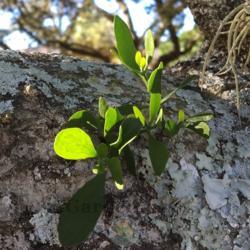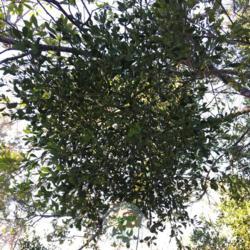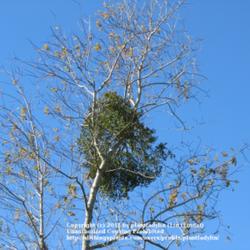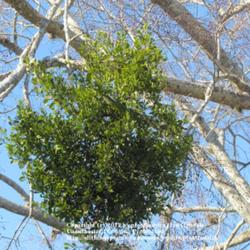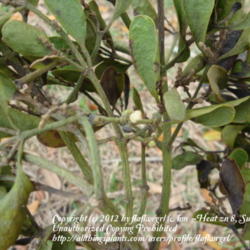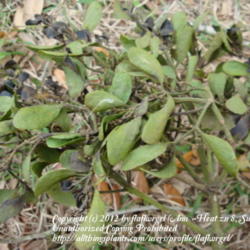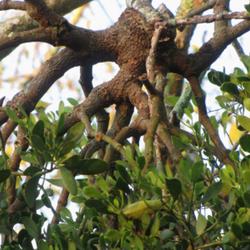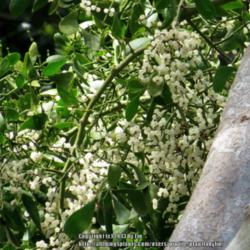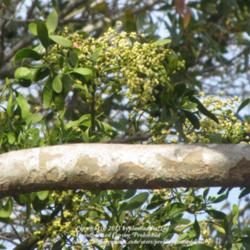Posted by
plantladylin (Sebastian, Florida - Zone 10a) on Oct 14, 2011 12:28 PM concerning plant:
American Mistletoe is native to the United States and Mexico. A common parasitic evergreen with thick, leathery oval leaves, the plant forms mounds from 1 to 3 feet in diameter on the branches of hardwood trees. The sticky, white berries are a food source for many birds and the plant spreads when the sticky seeds are excreted by the birds onto other branches. American Mistletoe has chlorophyll and produces its own food, but it also has modified roots that extend into the host tree to obtain water and minerals.
All parts of Mistletoe are highly toxic. If you use sprigs of this plant with the pretty berries for holiday decorating, be sure to keep it away from children and pets.
Posted by
flaflwrgrl (North Fl. - Zone 8b) on Feb 26, 2013 9:32 PM concerning plant:
As was mentioned in another comment the seeds are quite sticky! Here where I am, in the end of February, the mistletoe seeds are as ripe as ripe can be. There is a huge old Live Oak in the back yard that is host to mistletoe & as I go out walking in the yard there & playing with the dog I see the ripe seed clusters on the ground, on the lounge chair, everywhere! In the last few days I have repeatedly found leaves stuck to the bottom of my flip flops. When I try to scrape the leaves off, they won't go. I end up pulling them off only to find that the "glue" which bound them to my shoe is a cluster of ripe mistletoe seeds. Sticky they are!!!!!!! I have to scrape the shoe on the edge of the concrete walkway in order to get them off my shoe; even then a sticky substance remains sort of like the remnants of gum stuck on your shoe. I can now so easily see how this plant travels to other trees. Although sometimes I wonder how the poor birds can even fly what with clusters of mistletoe seeds stuck to their bodies.
Posted by
Sharon (Calvert City, KY - Zone 7a) on Nov 15, 2011 11:18 PM concerning plant:
In ancient times mistletoe was magic, it was considered a life saver and a panacea for many ailments. Because it grew from a host plant and its roots were not inground, the ancients revered it. There are many legends associated with mistletoe.
Our present day custom of exchanging kisses under a sprig of mistletoe is from the ancient belief that mistletoe signified life and fertility, the opposite of death. The kiss was to welcome life.
